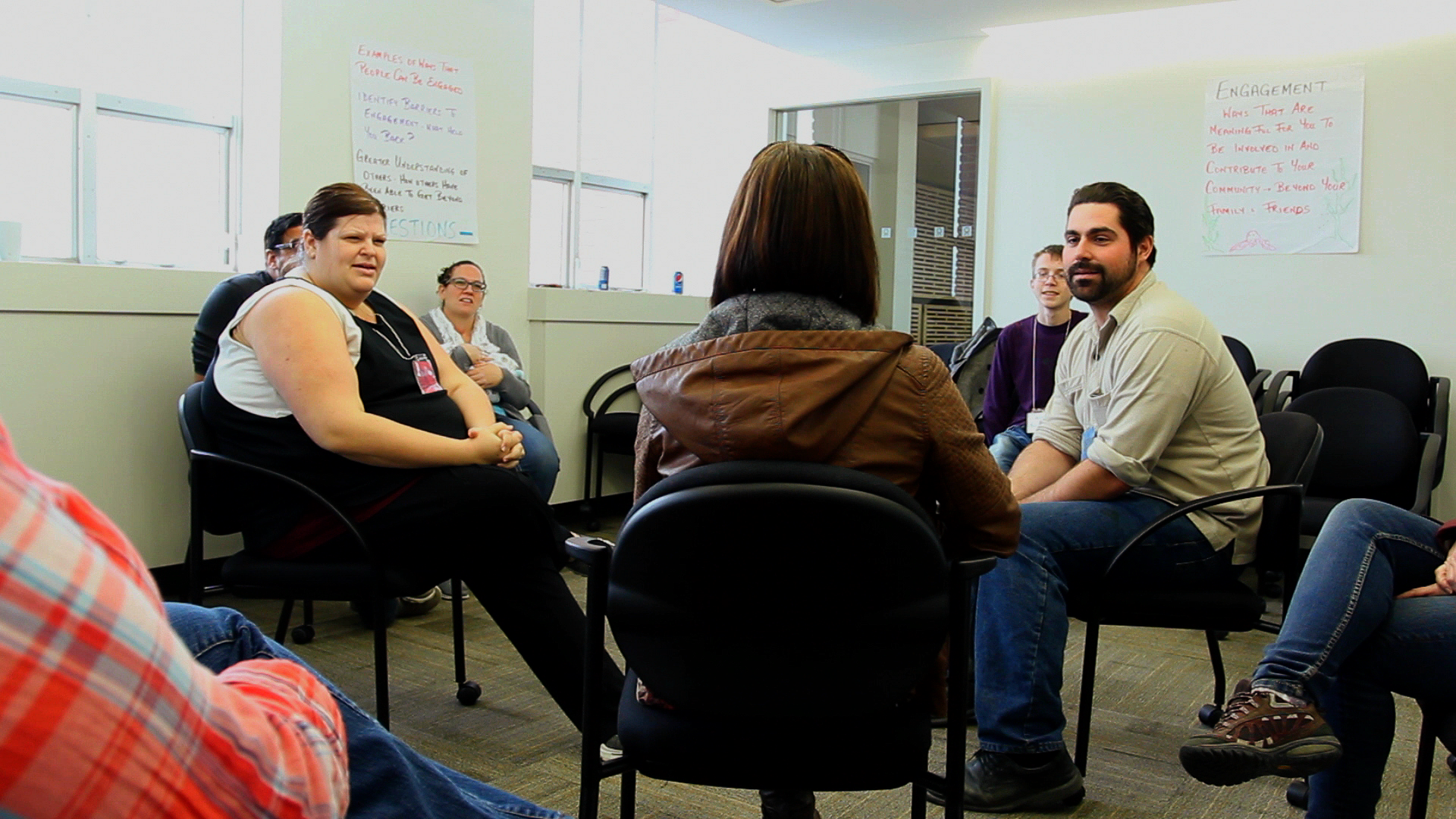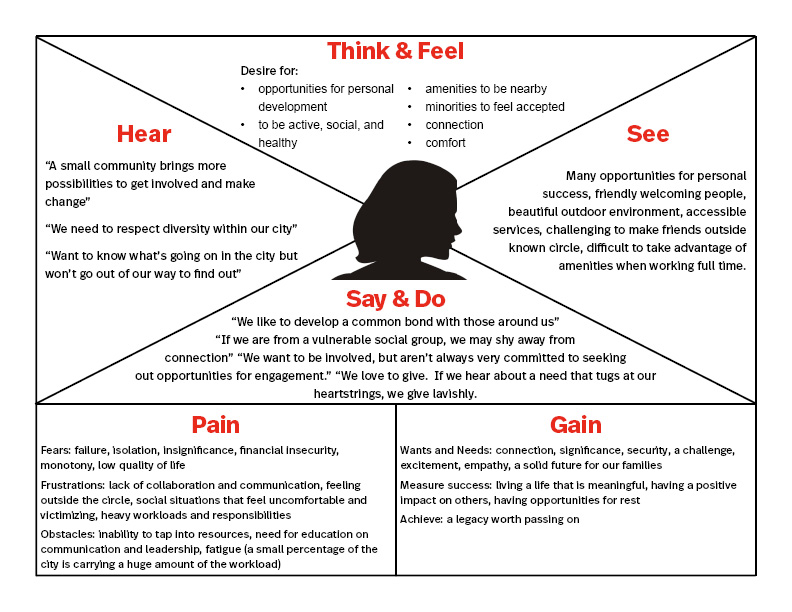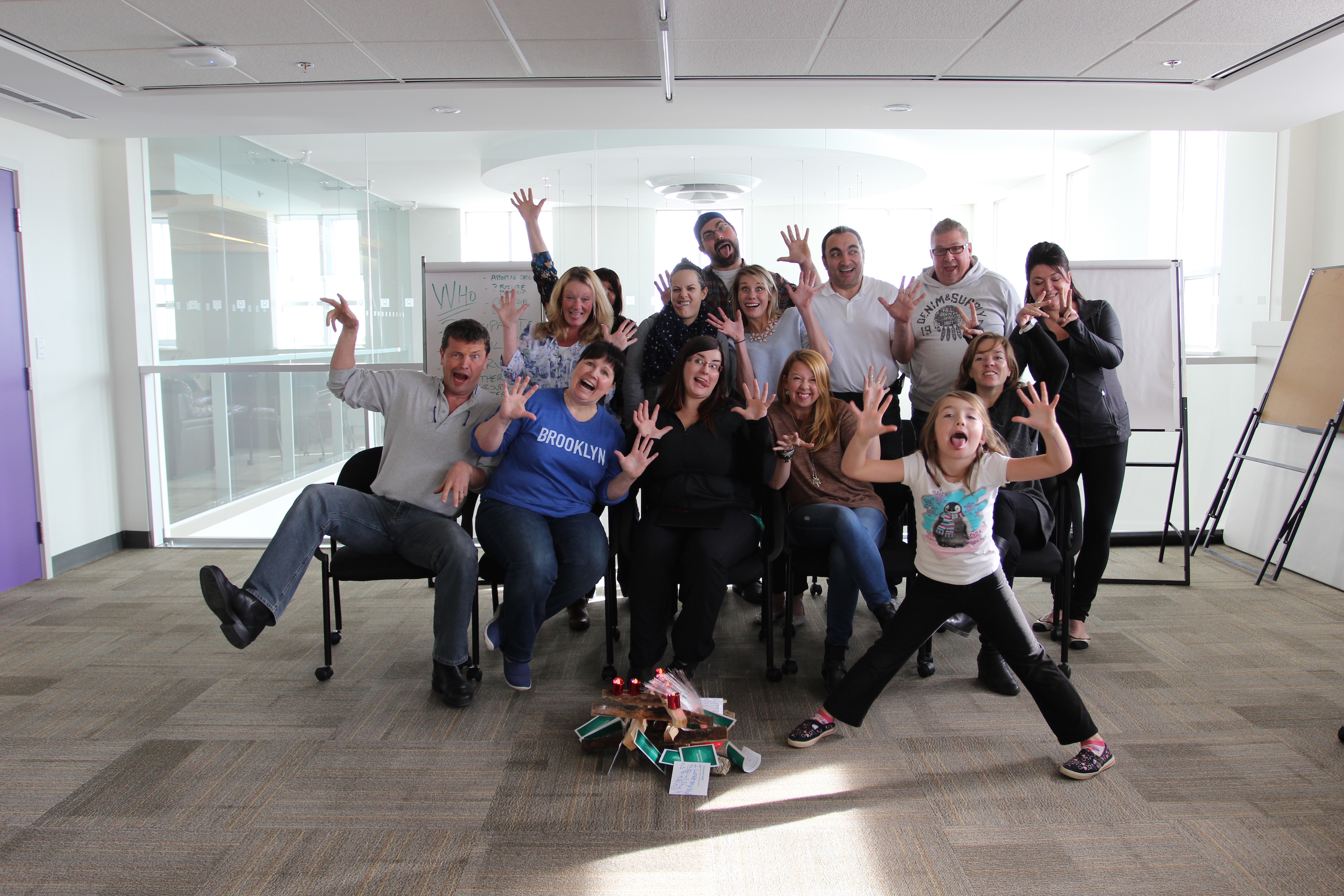How to Be a Community Leader
What are the three necessary components of a healthy community? One group of people in Dawson Creek, B.C. got together to figure it out.
Throughout the fall and winter of 2015/2016, 24 members of the Dawson Creek community met to participate in leadership development training with a focus on community vision, engagement, personal growth, and conversation for the future of their community. Supported by Encana Corporation, this community-based leadership development program was designed to enhance the vitality of the community, the Mayor, and Council of Dawson Creek.
Participants applied their new leadership and action-oriented skills to project management and strategic planning, hosting conversations with community members, and gaining insights into local people’s values and aspirations.
They developed new mechanisms for broad and deep community engagement. The program led to the formation of a new, network of diverse citizen leaders with skills, passion, and commitment. The new network will contribute to enhancing the quality of life in Dawson Creek, and the city can readily activate this group in support of council initiatives.
In March, the group shared their findings from the Community Forum to town council. Below is the presentation by program participant, Elizabeth Birak.

Community of Leaders participant Elizabeth Birak gathers insights at a community forum
On a sunny April afternoon last year I was checking my Facebook account for the 47th time that day when I noticed I received a message from the mayor. “Elizabeth, I have a really cool opportunity for you. Call my office if you’re interested.”
Now, I wasn’t accustomed to receiving Facebook messages from my mayor. I was a little starstruck. I knew when the mayor asks you to call, you call. And I’m really glad I did. He invited me and my husband to take part in the Community of Leaders Program sponsored by the City of Dawson Creek and Encana and presented by Banff Centre for Arts and Creativity.
My name is Elizabeth Birak, and these are two of my colleagues, Destiny Shaw and Chante Patterson-Elden. We are joined today by other participants in the program as well as Laurie Edward from Banff Centre and Fiona Liebelt from Encana. We would like to take a few minutes to give you a brief summary of this incredible program in which we were honoured to take part.
The Community of Leaders program consisted of two workshop intensives, community outings, occasional check-in meetings, and it culminated in an open community forum.
Not only did we receive valuable training in becoming more capable leaders, but we gained insight into our own city and heard from many different voices.
We’ve condensed the training we received into three main components of a healthy community: inclusivity, connection, and structure.
The importance of inclusivity
- Everyone has a voice that is valuable and needs to be heard
- Diversity is strengthening
The power of connection
- Connection is fostered when we risk asking powerful questions
- Connection grows when we listen to understand, and substitute helping with curiosity
The necessity of structure
- Energy will follow the path of least resistance
- Underlying structure will determine the path of least resistance
- Creating structure (amidst tension) where people feel heard and can give gifts will have a positive impact on community
After spending time together in the classroom, we had the chance to go out in our community and conduct interviews to gain insight of various perspectives in our city.
After these interviews we created empathy maps to position ourselves in another’s perspective. With these maps we asked questions about our fellow citizens like “What do they see? What do they hear? How do they act? What do they think?”
We compiled an empathy map that represents many interviews, as well as information that was collected during our community forum. We feel that this offers a holistic view of many voices in our city.

As we finished the Community of Leaders program, we posed the question “What future possibilities are there for us?”
At the very core of this issue we knew we wanted to be guided by these three mandates: promote inclusivity, facilitate connection, and create structure.
As leaders in the community we are, by nature, quite busy. Some participants are grateful for the experience, but cannot commit any more time and are ready to move on with their own endeavours. Some of us, however, would like to continue and create a collective that serves as a resource to the city council and mayor, as well as other groups in the city.
As a collective we can be used as a resource for the city, non-profits, user groups, and businesses to collect information, organize events, streamline communication, and support initiatives already in place. An example of this is our involvement with the health committee, which is currently working to help recruit and retain medical professionals in Dawson Creek.
As a collective, we are also committed to pursuing the means to recruit and train more community leaders through an annual Community of Leaders program. This can only benefit our city, as we will be empowering more leaders and creating mentors who will make a positive impact for many years to come.

The Dawson Creek Community of Leaders cohort